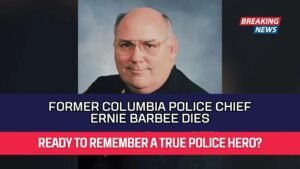A Topeka resident facing charges for obstructing officers during the Jan. 6, 2021, Capitol riot has petitioned a federal court for permission to attend President-elect Donald Trump’s upcoming inauguration. William Pope, acting as his own legal counsel in the U.S. District Court for Washington, D.C., submitted his plea on Dec. 28, citing hopes of receiving a presidential pardon once Trump assumes office.
Pope’s Legal Moves and Inauguration Request
Pope’s legal strategy has included delaying his trial, which was placed on hold in November to conserve resources for all involved parties, including potential jurors and witnesses. In his latest request, Pope argued that his jury “was the entire American public,” referencing Trump’s election support. He also expressed concerns about jury bias, given the predominantly Democratic voter base in Washington, D.C.
This is not Pope’s first trip to the nation’s capital for case-related proceedings. Court records indicate he has previously traveled to Washington twice under pretrial supervision terms, which include restrictions such as a ban on firearm possession.
Controversial Christmas Message
On Dec. 25, Pope submitted a separate filing that combined biblical references with quotes from Charles Dickens’s A Christmas Carol. He accused the judicial system of infringing on constitutional rights and stated, “For four years you have crushed the lives of peaceful Americans… You will be haunted by these chains you have forged for yourselves.”
Accompanying this statement was an edited mugshot from his February 2021 arrest, featuring a Santa Claus hat, sunglasses, a chain necklace, and a marijuana joint. The caption beneath the photo read, “I AM YOUR GHOST OF CHRISTMAS PAST, PRESENT, AND FUTURE.”
Opposition from Federal Prosecutors
U.S. Attorney Matthew Graves strongly opposed Pope’s request to attend the inauguration, arguing that allowing him to return to Washington, particularly to the Capitol building, would pose a potential danger to the community and law enforcement officers. Graves emphasized the risk of Pope encountering officers he resisted during the riot, stating that such a scenario could reignite legal violations.
Comparison to a Similar Case
Pope cited a related federal case involving Eric Lee Peterson, a Missouri man who pleaded guilty to Capitol-related charges but was permitted to attend Trump’s inauguration. Pope highlighted this precedent as a reason his own request should be granted.
Judge’s Pending Decision
As of Friday afternoon, the court had not issued a ruling on Pope’s travel request. The decision remains critical as it weighs the potential risks against Pope’s claims of constitutional rights and fair treatment.
Key Points in William Pope’s Case
| Aspect | Details |
|---|---|
| Date of Incident | January 6, 2021 |
| Charges | Obstructing officers in the U.S. Capitol |
| Trial Status | Delayed; placed on hold in November |
| Latest Request | Permission to attend Trump’s inauguration |
| Prosecution’s Argument | Risk of danger to the community and law enforcement |
| Precedent Case Referenced | Eric Lee Peterson, was allowed to attend inauguration despite similar charges |
| Court’s Decision | Pending as of Friday afternoon |
FAQs
Why did William Pope request to attend Trump’s inauguration?
Pope believes he may receive a presidential pardon if Trump takes office and wishes to witness the event in person.
What reasons did federal prosecutors give for opposing Pope’s request?
Prosecutors cited concerns about community safety and the risk of Pope encountering Capitol officers he resisted during the Jan. 6 riot.
Has William Pope been required to post bail?
No, Pope was not required to post bond after his arrest but must adhere to pretrial supervision terms, including a firearm ban.




